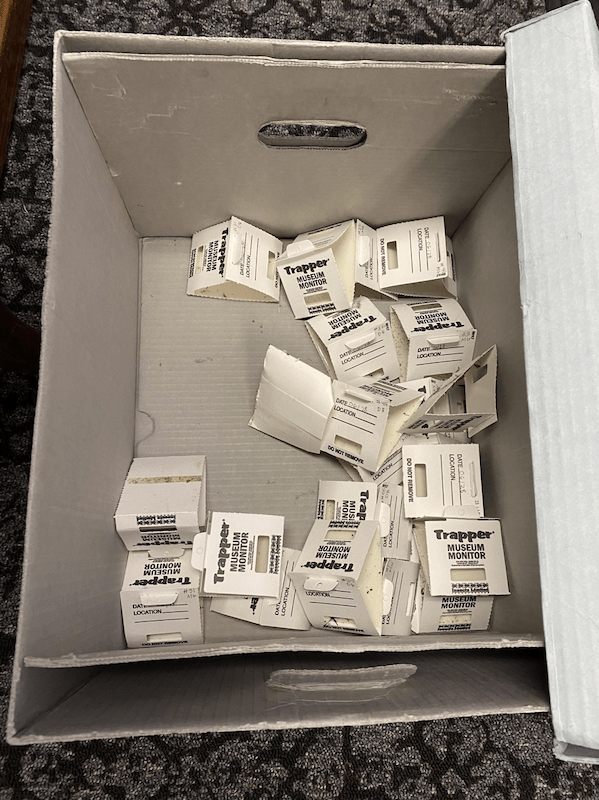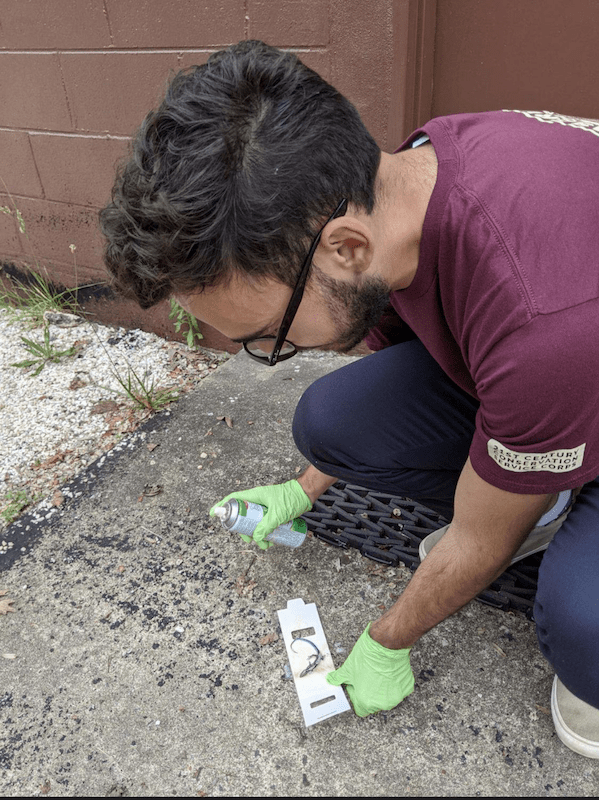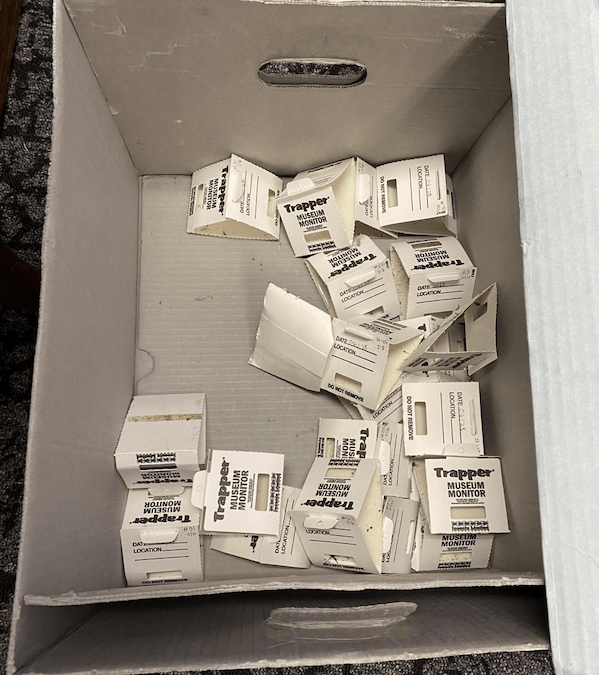The Bugs of Appomattox
Written by: Diego Borgsdorf
One of the most interesting elements of my internship at Appomattox Court House National Historical Park (APCO) has been partaking in the implementation of the Park’s Integrated Pest Management program. Every month, I, alongside another intern and the Museum Technician, place traps throughout the historic buildings in the Park that collect pests that happen to walk over the traps. We then identify which and count how many pests we find, and the museum staff work to analyze the pests throughout the year in tandem with other environmental data.
At APCO, we collect data on what insects and other pests can be found in the historic structures of the Park at the end of every month. So, I helped collect this data for the first time at the end of May, during my first few weeks here. This experience was shocking! Before working in a museum, I never would have imagined the extent to which pests are monitored and analyzed here. As I have learned, keeping this integral part of museum management and maintenance outside of the public view is part of the program’s design. When we set traps, we make sure to neatly tuck them behind doors, exhibit cases, and other structures. When visitors walk into our historic structures, they won’t see our traps, nor will they see the pests we clean weekly. It works as a seamless, behind-the-scenes process to protect both artifacts and the visitor experience.

Beyond the surprise of simply discovering the grandeur of the IPM program, the pests we find, and the lessons they tell, are often surprising. For example, in several areas of the Park, we have discovered high amounts of silverfish stuck to our traps! Seeing the glimmer of these small pests is not just an interesting catch–it’s an indicator of an important environmental condition of the place they come from. Silverfish are attracted to moisture. So, finding the presence of silverfish in a museum space indicates the presence of moisture or a high relative humidity. This might encourage a museum professional to set out a dehumidifier or more closely monitor moisture. This is because such environmental conditions do not just facilitate the presence of silverfish–they also can directly damage museum objects! In that sense, our traps function as a sort of canary. They are the initial warning signs and evidence for larger conditions to which museum managers can craft further responses.
Unfortunately, our IPM program often entails a sad bycatch. Often, lizards get stuck on our insect traps! We do not monitor or control for lizards in our museum spaces, so these lizards’ casualties are unfortunately needless. For this reason, APCO museum staff have developed a lizard prevention and response program. I helped build small pieces of plastic wires to guard the sides of the insect traps. These wires are our high-tech lizard exclusion devices! In addition, if we catch a live lizard in our trap, we rely upon our trusty “lizard liberator”–a can of Canola oil we spray on the trap and lizard to reduce the stickiness of the trap and let the lizard run free.

While this reflection may seem trivial, the IPM program has taught me so many important lessons about museum management. Though this process is often one that makes me queasy, it shows me that data collection is such an important part of keeping up a museum space. Museum managers constantly have to collect data about the conditions in which they house and display museum objects. Insects are just another data point, like temperature collected from loggers or light levels collected from light meters. Second, these data inform practices and protocol for future management. Whether it’s adjusting the usage of dehumidifiers in a given space or developing technology to prevent reptilian bycatch, museum managers are constantly integrating research and data into plans to solve challenges of preserving historical objects, far into the future. These skills–research and response–are some of the tenets of museum management, and seeing their application in an IPM program has been such a fascinating process to witness.
It’s for this reason–not because I love analyzing dead bugs–that the IPM program makes me excited about the CRM field. I am so inspired by seeing how masterfully museum staff research environmental conditions and create response plans. Looking towards a future, with an uncertain climate, I am excited to learn more about these skills!
Visit American Conservation Experience to discover your love for land preservation and conservation.